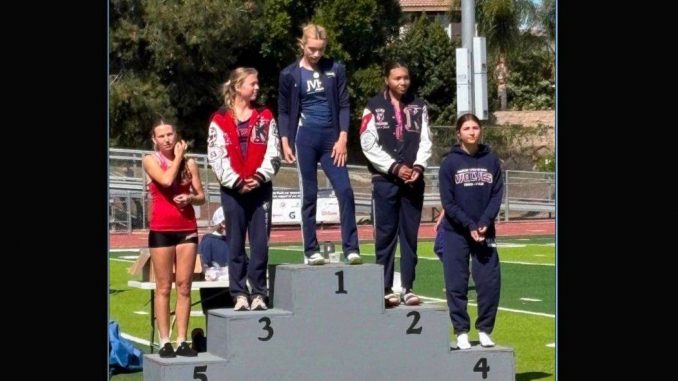
Sonja Shaw/Used with permission
| Published May 29, 2025
In a significant policy shift, the California Interscholastic Federation (CIF) has introduced a “pilot entry process” for the upcoming state track-and-field championships. This change comes in response to the participation of AB Hernandez, a transgender female athlete, whose recent successes have sparked statewide and national discussions on fairness in girls’ sports.
Policy Changes and Implementation
The CIF’s new policy allows an additional “biological female” athlete to compete in the triple jump, long jump, and high jump events—disciplines where Hernandez qualified. This measure ensures that cisgender female athletes who narrowly missed qualification due to Hernandez’s performance still have the opportunity to compete. Furthermore, if a transgender athlete secures a podium position, the next highest-ranking cisgender female athlete will also receive a medal, preserving recognition for both competitors.
Legal and Political Context
The policy adjustment follows heightened scrutiny from federal authorities. President Donald Trump recently signed Executive Order 14201, titled “Keeping Men Out of Women’s Sports,” which threatens to withhold federal funding from institutions that allow transgender women to compete in women’s sports . Subsequently, the U.S. Department of Justice initiated a Title IX investigation into California’s policies, examining whether they violate federal protections against sex discrimination.
State Response and Ongoing Debate
Governor Gavin Newsom has expressed support for the CIF’s approach, describing it as a balanced solution to a complex issue. He emphasized the importance of inclusivity while acknowledging concerns about competitive fairness . However, critics argue that the policy creates a dual standard and may be discriminatory, while supporters believe it appropriately balances inclusion with fairness.
The situation underscores the broader national debate over transgender participation in sports, highlighting the tension between state policies that support gender identity inclusion and federal directives emphasizing biological sex-based classifications. As the CIF’s pilot program unfolds, its outcomes may influence future policies and legal interpretations surrounding transgender athletes in school sports.
Here are the key implications of California’s new high school sports policy on transgender athletes:
1. Biological Girls Still at a Disadvantage
Many conservatives argue that allowing biological males to compete in girls’ sports, even with added medal spots or entries for females, doesn’t solve the core issue—unfair physical advantages. The new policy may be seen as a symbolic band-aid that doesn’t address competitive integrity.
2. Undermines the Purpose of Title IX
From this perspective, Title IX was created to ensure equal athletic opportunities for biological females, and any policy that dilutes those opportunities—even by sharing the podium—contradicts its original intent. Conservatives see this as a distortion of a law meant to protect women.
3. Federal Pushback Is Justified
Supporters of Trump’s Executive Order 14201 may view the federal government’s investigation into California as a necessary check on what they see as ideological overreach by progressive states. They believe national standards must protect fairness for girls over state-level political agendas.
4. Sets a Dangerous Precedent
Conservatives worry that California’s “pilot policy” could spread nationwide, institutionalizing what they see as an unfair system. They fear that girls in other states may soon be subject to similar competition dynamics, despite local opposition.
5. Fuels 2025 Election Debate
The timing of this decision places transgender sports participation back at the center of conservative platforms. It may be used to energize voter bases, especially among parents and women’s rights advocates who feel mainstream institutions are ignoring their concerns.
Overall Takeaway:
California’s adjustment to its high school sports policy—creating additional opportunities and recognition for cisgender female athletes in events with transgender participants—reflects a growing effort to balance inclusion with fairness. While the move attempts to address concerns from both sides of a deeply polarized debate, it also raises complex legal, political, and cultural questions that are likely to reverberate far beyond the state. As federal authorities investigate and other states watch closely, this policy could become a national test case for how schools navigate gender identity, competition, and civil rights in sports.
SOURCES: REDSTATE – CA High School Sports Governing Body Tries Again to Fix Rule Allowing Boys to Compete As Girls, and Fails
NATIONAL REVIEW – California Changes the Rules for Trans High School Athletes in Girls’ Sports
GV WIRE – CA Changes Track-and-Field Championships After Trans Athlete’s Success. What to Know
THE NEW YORK POST – DOJ launches Title IX probe into California over state law allowing trans athletes to play women’s sports





Be the first to comment